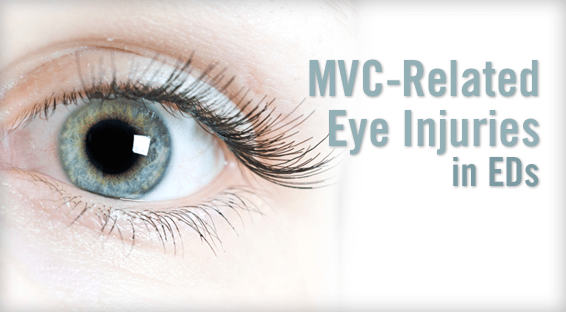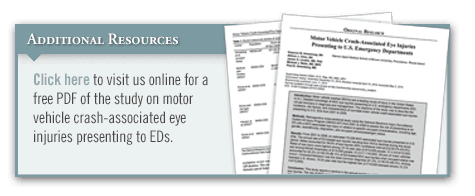National studies have shown that motor vehicle crashes (MVCs) are among the leading causes of injuries in the United States. “Victims of MVCs usually present at EDs for care to manage injuries,” says Grayson W. Armstrong. “Many of these patients come to EDs with unique eye injuries that result from crashes, but few studies have characterized these injuries when they present to EDs. A better understanding of the risk factors for MVC-related eye injuries may help in the diagnosis and management of these patients.”
Examining Trends
In a retrospective cross-sectional study published in the Western Journal of Emergency Medicine, Armstrong and colleagues investigated the characteristics of MVC-associated eye injuries presenting to EDs. Using the National Electronic Injury Surveillance System All Injury Program, the research team assessed the risk of presenting to an ED with an MVC-related eye injury. From 2001 to 2008, an estimated 75,028 MVC-associated eye injuries presented to EDs, with contusions and abrasions representing the most common diagnoses.
The annual rate of ED-treated eye injuries resulting from MVCs declined during the study period. “Our study indicated that roughly two to four in 100,000 Americans suffer MVC-related eye injuries each year,” Grayson says. “Fortunately, the rate of these injuries appears to be decreasing overall.” He notes that advanced frontal airbag systems, which were mandated in 2006, may have played a role in the decrease in rates seen during the study period.
Defining At-Risk Groups
According to the study, males were at greater risk than females for MVC-related eye injuries, accounting for nearly 60% of cases that were seen in EDs. Rates of eye injury were highest among patients aged 15 to 19 and among African Americans. “These findings highlight the need for educational interventions for patients who are at higher risk,” says Armstrong. “MVC-related eye injuries consume many healthcare dollars and ED resources. We need to find effective prevention strategies that inform patients about ways to reduce their risk. Additionally, although current auto safety equipment is protective for many types of serious MVC injuries, more studies are needed to see if they’re also protective for eye injuries or if additional measures are needed.”
Armstrong says that the study findings are important not only to ED personnel, but also to primary care and pediatric physicians. “Other physicians can pitch in to educate younger people and others who are at risk for MVC-related eye injuries,” he says. “They can help by promoting safer driving practices and regular use of seatbelts.” In future research, Armstrong is hopeful that studies will further explore trends in the rates of MVC-related eye injuries to determine why they occur and how best to care for them. He says that understanding and further investigating the risk factors should guide future prevention strategies.




 TimH
TimH